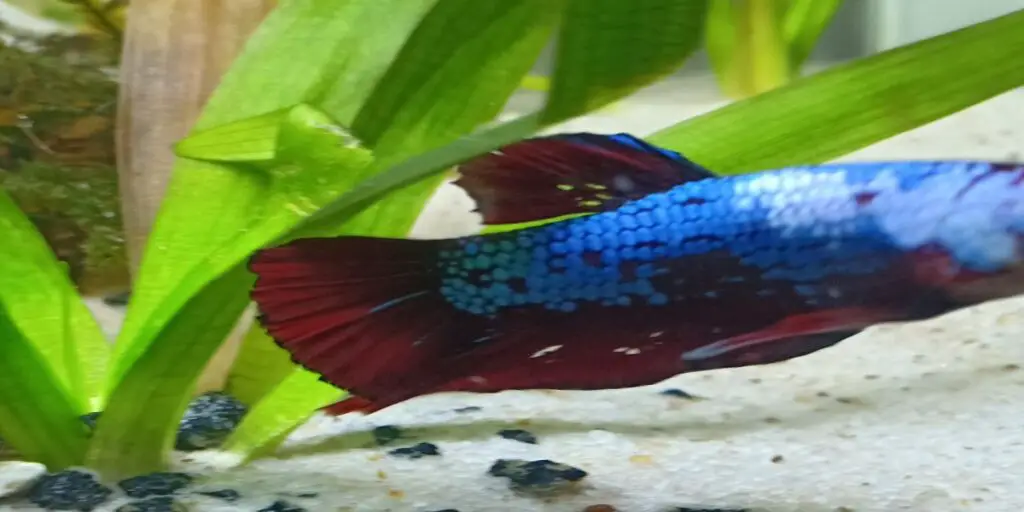Common causes and remedies for a hole in betta fin. Learn how to keep your Betta fish healthy and happy. Explore expert tips and advice for fin care.

Betta fish, with their vibrant colors and flowing fins, are a popular choice among aquarium enthusiasts. However, as a betta owner, you may encounter a common issue: holes in your betta’s fins. While this problem can be concerning, it’s important to understand the causes, symptoms, and treatment options to ensure your betta’s well-being.
Causes of Holes in Betta Fins
Several factors can contribute to the development of holes in a betta’s fins. Understanding these causes is the first step in addressing the issue effectively:
1. Poor Water Quality: Betta fish are extremely sensitive to water conditions. If your aquarium water is not properly maintained, it can lead to a range of health problems, including fin issues.
2. Fin Rot: Fin rot is a common bacterial infection among bettas. It causes the fins to deteriorate and, in severe cases, develop holes.
3. Fin Tear: Sometimes, a betta’s delicate fins can get caught on sharp objects within the tank, such as decorations or pieces of filter media. This can result in tears or holes in the fins.
4. Fin Damage: Aggression from other fish, rough handling, or exposure to harmful chemicals can all cause damage to a betta’s fins, leading to holes.
Symptoms of Holes in Betta Fins
Identifying the symptoms of holes in your betta’s fins is crucial for timely intervention:
1. Holes in Fins: The most obvious symptom is the presence of holes in your betta’s fins. These may be small or large, depending on the severity of the issue.
2. White or Black Edges: If you notice white or black edges around the holes, this could be a sign of fin rot. It’s a clear indicator that a bacterial infection is present.
3. Ragged or Torn Fins: Ragged or torn fins can occur due to fin tear or fin damage.
4. Shortened Fins: Fins that are shorter than usual may indicate that your betta is experiencing ongoing fin damage or fin rot that hasn’t healed properly.
Treatment of Holes in Betta Fins
The treatment for holes in betta fins depends on the underlying cause. Here are some general treatment options:
1. Water Changes: Regular water changes are essential for maintaining excellent water quality. This is particularly crucial if your betta is suffering from fin rot. Aim for weekly water changes of 20-30% of the tank volume.
2. Aquarium Salt Baths: An aquarium salt bath can be beneficial for healing fin rot and preventing the spread of infection. Follow the instructions carefully, as improper salt concentrations can harm your betta.
3. Medicated Food or Water: If your betta has a bacterial infection, a veterinarian with expertise in fish care may prescribe medicated food or water. Ensure you follow the prescribed treatment regimen precisely.
Prevention of Holes in Betta Fins
Preventing holes in your betta’s fins is often easier than treating them. Here are some proactive steps you can take to maintain your betta’s fin health:
1. Maintain Good Water Quality: Regularly test and monitor water parameters, including ammonia, nitrites, nitrates, pH, and temperature. Frequent water changes are vital to ensure a clean and stable tank environment.
2. Provide Suitable Tank Decor: Choose decorations and accessories that are soft and smooth, avoiding sharp or rough edges that can injure your betta’s fins. Live plants can also be an excellent addition to your tank.
3. Select Tankmates Carefully: Research and choose tankmates that are compatible with bettas. Avoid aggressive or fin-nipping species that can harm your betta’s fins.
4. Routine Maintenance: Clean the substrate, remove uneaten food, and keep the filter clean. A well-maintained tank reduces the risk of bacterial and fungal infections.
5. Monitor Your Betta: Keep a close eye on your betta’s behavior and appearance. Early detection of any signs of distress or illness can help you address issues promptly.
6. Quarantine New Additions: Isolate new fish or plants in a separate tank for a few weeks before introducing them to your betta’s environment. This prevents the introduction of potential diseases.
7. Handle with Care: When handling your betta, be gentle and avoid gripping or squeezing their delicate fins. Using a soft net for catching or moving your betta can minimize the risk of damage.
When to Seek Professional Help
While many cases of holes in betta fins can be managed at home, there are situations where professional help is essential:
1. Severe Fin Damage: Extensive fin tearing or large, non-healing holes require veterinary attention.
2. Worsening Symptoms: If your betta’s condition worsens despite your efforts, consult a vet.
3. Other Health Issues: If your betta exhibits additional symptoms such as lethargy, loss of appetite, or unusual behavior, these may indicate underlying health problems requiring veterinary care.
4. Uncertainty: If you’re unsure about the cause of the fin issues or the appropriate treatment, consult a knowledgeable veterinarian with experience in fish care.
You May Also Like:
- Holes In Betta Fins
- Black Spot Disease Betta: Essential Tips For Fishkeepers
- Betta Black Spot Disease: Proven Methods For Recovery
Conclusion
In conclusion, holes in betta fins are a common issue that can be caused by various factors. While they can be concerning, early detection and proper care can often resolve the problem. By maintaining excellent water quality, selecting suitable tank decorations, and being attentive to your betta’s needs, you can keep their fins healthy and vibrant.
Remember that each betta is unique, so tailor your care to their specific requirements. Responsible and informed fishkeeping is the key to ensuring the health and happiness of these stunning aquatic creatures. Thank you for being a dedicated and caring betta fish owner!
